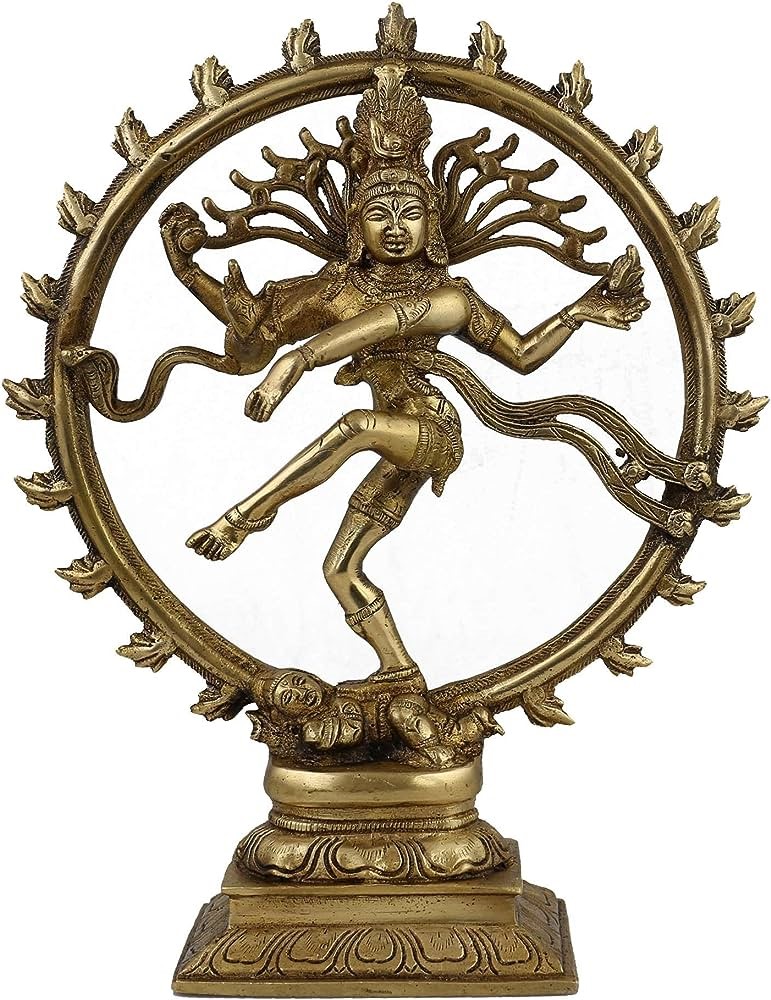Description

Disclaimer: Copyright infringement not intended.
Context
- Greeting G20 leaders in front of Bharat Mandapam in New Delhi’s Pragati Maidan this weekend will be a magnificent 27-foot Nataraja, the tallest statue of Lord Shiva’s dancing form in the world.
Details
The Nataraja Statue
- The 27-foot-tall Nataraja statue is crafted from 'Ashtadhatu,' an eight-metal alloy, making it one of the world's tallest statues depicting Lord Shiva in his dancing form.
- Renowned sculptor Radhakrishnan Sthapaty, hailing from Swami Malai in Tamil Nadu, created this masterpiece, weighing approximately 18 tonnes.
Inspiration from Revered Temples
- The design of the Nataraja statue draws inspiration from three revered Nataraja idols in prominent South Indian temples:
- Thillai Nataraja Temple in Chidambaram.
- Uma Maheswarar Temple in Konerirajapuram.
- Brihadeeswara (Big) Temple in Thanjavur, a UNESCO World Heritage Site.
The Cholas and Nataraja
- The Nataraja form of Lord Shiva has strong historical ties to the Chola dynasty, which thrived from the 9th to the 11th centuries AD.
- The Cholas, known for their patronage of art and culture, constructed elaborate Shiva temples, including the famous Brihadeeswara Temple.

Chola Art and Culture
- The Chola empire, during its zenith, was a prosperous and culturally rich civilization in South India.
- Their art and architecture, including the creation of intricate sculptures, flourished during this period.
Evolution of the Nataraja Form
- While Shiva has been worshiped for centuries, the portrayal of Shiva as Nataraja, or the Lord of Dance, emerged in sculpture during the 5th century AD.
- However, it was under the Cholas that the Nataraja form gained iconic status, particularly in bronze sculptures.
Shiva's Complex Identity
- Shiva is a multifaceted deity in Hinduism, encompassing various attributes and roles.
- He is both a destroyer (Mahakala) and a great ascetic, as well as the patron of ascetics.
- As Nataraja, Shiva is celebrated as the 'Lord of Dance' and is said to have created 108 different dances, each symbolizing different aspects of existence.
Comprehensive overview of Shiva's Nataraja form
Iconography
- Nataraja is typically depicted as a four-armed deity.
- He stands in the dancing posture on a circular platform, representing the universe.
- The upper right hand holds the damaru (a small drum) symbolizing the rhythm of creation.
- The upper left hand holds the fire (or a flame), symbolizing destruction and transformation.
- The lower right hand is in the abhaya mudra (a gesture of fearlessness).
- The lower left hand points towards the raised left foot, symbolizing liberation.
Cosmic Dance
- Shiva's dance represents the cosmic cycle of creation, preservation, and destruction (Srishti, Sthiti, and Samhara).
- The dance also signifies the passage of time, from creation to dissolution.
- The rhythm of the dance symbolizes the heartbeat of the universe.
Apasmara
- Under Shiva's right foot, there is a demon-like figure known as Apasmara Purusha or Muyalaka, representing ignorance and illusion.
- Shiva's act of crushing this demon signifies the victory of knowledge and wisdom over ignorance.
Tandava and Lasya
- Nataraja's dance can be classified into two forms: Tandava and Lasya.
- Tandava is the vigorous, masculine dance representing destruction and power.
- Lasya is the gentle, feminine dance representing creation and grace.
Cultural Significance
- The Nataraja form is not only a religious symbol but also a prominent motif in Indian art and culture.
- It has inspired countless sculptures, paintings, and dance forms like Bharatanatyam.
- The Chidambaram Nataraja Temple in Tamil Nadu, India, is a famous shrine dedicated to Lord Nataraja.
Philosophical Interpretation
- Nataraja's dance is often interpreted as a representation of the concept of Advaita (nondualism), where the apparent duality of the universe is an illusion, and everything is a manifestation of the same divine essence.
Spiritual Significance
- Devotees of Shiva see the Nataraja form as a source of inspiration for their spiritual journey.
- It reminds them of the transient nature of the material world and the need to seek inner transformation and realization.
Symbolism of Nataraja
- Nataraja's dance symbolizes the balance between opposites - creation and destruction, chaos and order, birth and death.
- It represents the eternal cycle of life, death, and rebirth.
- Shiva's Nataraja form also signifies the ultimate goal of life - liberation (moksha) from the cycle of birth and death.
- The Nataraja sculpture is characterized by several symbolic elements:
- Flaming aureole or halo: Represents the circle of the world, which Shiva both fills and transcends.
- Long dreadlocks: Indicate the energy of Shiva's dance.
- Four arms: Each holding symbolic items, such as a hand drum (damru) and fire (agni).
- Dwarf-like figure underfoot: Symbolizes illusion and ignorance, which Shiva triumphs over.
- 'Abhayamudra' (fear-alleviating gesture): Signifies Shiva's role as a protector and source of reassurance.
The Lost Wax Method
- The Nataraja statue's creation followed the traditional 'lost-wax' casting method, a technique with roots dating back over 6,000 years.
- In this method, a wax model is covered in a special soil paste, dried, and then heated, allowing the wax to melt away, leaving a mold. Molten metal is then poured into the mold to create the sculpture.
Artistic Heritage
- The sculptors responsible for the Nataraja statue trace their lineage back 34 generations to the Chola period, preserving ancient techniques.
- The project, involving the creation of such a monumental statue, took seven months to complete and cost around Rs 10 crore.

Conclusion
In summary, the Nataraja form of Lord Shiva, with its rich history and symbolism, represents a cultural and artistic legacy that continues to captivate and inspire people around the world. The installation of the 27-foot Nataraja statue at Bharat Mandapam serves as a symbol of this enduring tradition and will greet world leaders during the G20 summit.
|
PRACTICE QUESTION
Q. Discuss the historical significance and religious symbolism of Lord Shiva's Nataraja form. How did the Chola dynasty contribute to the evolution of the Nataraja sculpture? (150 Words)
|
https://indianexpress.com/article/explained/explained-culture/shivas-nataraja-history-symbolism-8929233/















